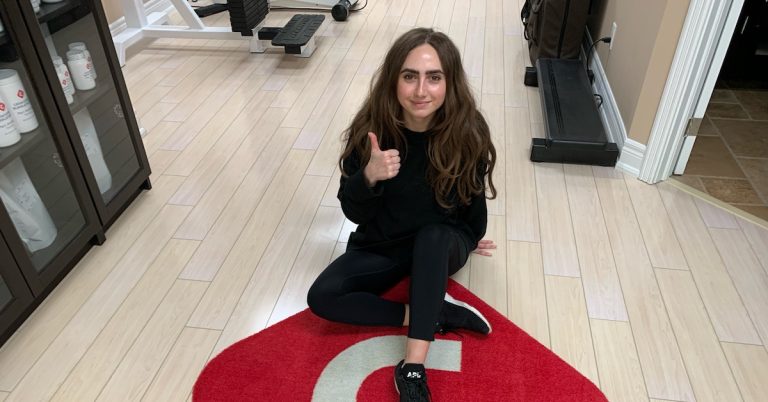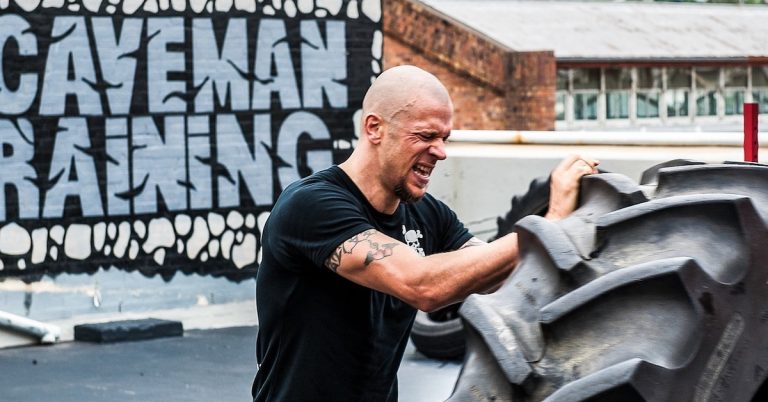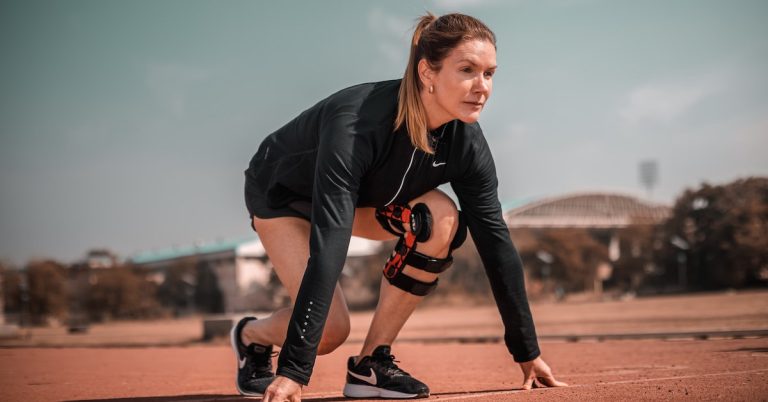Many health and fitness misconceptions exist. For instance, we’re told to eat a high carbohydrate breakfast to fuel up and kickstart the day with plenty of energy. Unfortunately, for many this leads to a midmorning slump, extreme cravings and hunger throughout the day, and a layer of fat around their midsection that seems to persist no matter how much exercise is performed.
And when it comes to exercise, most people start a workout with some aerobic activity followed by static stretching to warm-up thoroughly. Yet, this often results in less strength, speed and power, and ultimately performance suffers. To make matters worse, this practice may actually increase the likelihood of injury!
And if an injury does occur, what’s the first thing we’re told to do?
Rest it and ice it.
Well, if you read Gary Reinl’s latest book ICED!, you won’t be so quick to follow tradition. You may, in fact, do the opposite! Reinl does a superb job exposing the harm of icing an injury and lays out a revolutionary plan to expedite the healing and recovery process. The bottom line if you want to heal quickly and efficiently: Don’t interfere with the body and that’s exactly what icing does!
ICED! is packed with valuable information. Here’s a quick summary…
The key with tissue healing is to allow waste products to be released and nutrients and healing factors to enter. As Reinl likes to say: “Garbage out, groceries in!” You must allow the inflammatory process to take place – do not hinder it with icing.
The waste products are evacuated through the lymphatic system, not the circulatory system (the particles are too big). Therefore, muscle contraction is necessary to move lymph and eliminate these chemicals, not immobilization!
You do not necessarily need to work that exact area of injury (it may be too painful), just work that region of the body – it will create a negative pressure around the site. It’s only a one-way system. There’s no other way out, but it requires muscle activation.
RICE is not NICE!
Sure, ice can relieve pain but will cause a congestion of the tissue (it causes a back flow of the interstitial space); it shuts off the signal between the muscles and nerves; and does not help the evacuation of deoxygenated blood and waste. Therefore, it’s counterproductive!
Ibuprofen is worse because it actually stops the signal of the inflammatory response, not just prevents it. The body’s natural inflammatory response is not a mistake!
According to Reinl: “There can be inflammation without healing, but there cannot be healing without inflammation!”
There are 3 stages of healing:
- Inflammatory response
- Repair
- Remodeling
If you skip stage 1, you have prevented stage 2 and 3.
The “Compression” aspect of RICE should mean muscle compression to pull the waste out of the injured tissue and supply the site with nutrition and other healing factors.
Macrophages clean up waste and IGF-1 allows the remodeling of tissue. Do not hinder it with ice, which may congest the area. People who use ice show joint instability when healed.
For pain management, decongest the area of congestion. Again, do not block it with ice or prevent it with anti-inflammatories. Use movement instead and then “tell me how you feel!” If you are in a cast, simply moving your fingers or toes will help.
What a powerful message! A new paradigm exists for injury rehabilitation. The choice is yours.
NSAIDS Are Not Completely Useless
Proteolytic enzymes (PEs) work by digesting dead tissue that accumulates as a result of injury. Unlike icing, normal fluid retention is able to take place thereby reducing swelling and pain while enhancing the ability to heal. In addition, PEs serve as a healthy alternative to conventional medicines such as ibuprofen, aspirin, and other non-steroidal anti-inflammatory drugs (NSAIDs), which have many negative side effects (e.g., they can damage the gut, hinder absorption of nutrients, delay recovery, impair healing of tendons, and blunt the muscle hypertrophy response). In fact, the most common pills sold in Europe, more than any drug or medication, are PEs.
Now, NSAIDS are not completely useless. Break a bone in your hand or foot and it can take a while before you’re back to normal. I had a client who broke his hand during a mixed martial arts competition. Forget weeks, this injury was lingering for months, and it was affecting his strength training. It hurt whenever he gripped anything. After all kinds of therapy with no significant alleviation of the pain, he decided to fill the Vioxx prescription that was collecting dust and give it a shot. Guess what, it worked! For the first time in a long time, he was pain-free and could train full-force again. This lasted for about 6 months before the pain returned slightly. He popped a couple more pills and was off to the races again. His strategy was to use the stuff every 6 months thereafter to clear up any lingering pain and chronic inflammation. Eventually, when Vioxx was pulled off the market, he switched to Celebrex, but the result was the same. So, the benefits may outweigh the risks if a small dose is taken once in a blue moon.
While I’m on the subject, let me mention something that’s on my mind. Today, everyone seems to espouse the importance of core strength and stability. “Make sure your programs focus on this aspect of training. Core-based exercises are the priority,” we’re told. Well, let me ask you a question: How good is an athlete if they injure their hand or foot? Or if they injure their wrist or ankle? Or injure their elbow or knee? (Sorry, that’s multiple questions.) The point I’m making is that the core should not be trained in lieu of the extremities. They’re not mutually exclusive. Place just as much emphasis on the limbs as you do the core if you wish to reduce the incidence of injuries and develop a well-rounded athlete.
The Real “Core” Problem
Usually you must look above or below a joint to find the cause of injury. Treating the site of an injury can have an analgesic effect and may facilitate healing; however, many times it does not address the core problem, and the injury is likely to reoccur.
Take medial epicondylitis (golfer’s elbow), for example. To treat it above, below and at the site of the injury, try this approach:
First, stretch the short, tight muscles (often the wrist flexors and shoulder internal rotators), and then strengthen the long, weak muscles (the wrist extensors and shoulder external rotators). Soft-tissue work will aid in freeing up the forearm and upper arm sleeve. Many modalities are used to accomplish this, such as ART, myofascial release, acupuncture, deep tissue massage, and so on. Emphasize the treatment that resonates best with you.
Of course, you’ll have to revise your training a bit. Ditch supinated chin-ups, rows, and curls and fat-grip training for a while, and use straps on deadlifts. Basically, if it hurts, don’t do it! Work around the injury for now.
That advice is easier said than done. So many movements can flare up this condition that it seems like only calf and abdominal training is permissible. In the past, there was a great topical formulation that worked wonders. The product was called Zanagen Ignite. This stuff brought heat to the area, significantly reduced pain, and produced a noticeable improvement in performance.
It’s amazing how just a hint of pain can zap your strength. All you needed to do was apply Ignite about 30 minutes before your workout, and pain decreased while strength increased. A little of this stuff went a long way!
Unfortunately, Zanagen shut its doors and Ignite was abruptly extinguished shortly after its inception! It’s too bad because it was a great product, but I’m happy to report an alternative. It’s called LivSport Pre-Workout Cream, and it, too, brings heat to the area. Its active ingredient capsicum, which contains capsaicin, has been used as a topical analgesic for centuries; however, it’s missing one key player that Ignite brought to the table: arginine hydrochloride (HCL). Arginine causes vasodilation – it brings blood to the area. I found a solution though to ignite LivSport’s cream: add arginine!
LivSport is powered by Delivra™, a transdermal technology that permits deep absorption. This new delivery system developed by Dr. Joseph Gabriele can provide a local effect with a negligible amount making into the blood stream. I’ve heard Dr. Gabriele talk a couple times on this technology, and it’s quite potent. In fact, Delivra is claimed to be 687% more effective in penetrating deep into the skin than the major leading topical relief brand and it can get some pretty big particles in there.
According to Dr. Gabriele, more is not better when using Delivra for pain reduction. Consistent application is best, so using a large dose is not necessary. I found 1 gram of 100% pure, pharmaceutical-grade l-arginine HCL per dose to do the trick. Just squirt the LivSport Pre-Workout Cream into a small bowl, add arginine, mix the concoction with an espresso spoon until the powder is completely dissolved, and apply to your skin about 15-30 minutes before training.
If you like the idea of bringing blood to the area for healing purposes, then you’ll love this procedure. It’s called platelet-rich plasma (PRP) therapy, and it brings blood to the area, literally!
A Crude And Revolutionary Treatment
The method known as PRP involves a doctor injecting your own blood that has been centrifuged down and rich in platelets (which is part of the blood that contains all the healing factors) into an injured area to repair muscle, bone, and other tissue. In fact, this technique appears to help regenerate ligament and tendon fibers, which could shorten rehabilitation time and possibly eliminate the need for surgery.
To say the method is revolutionary would be an understatement. It is so crude and simple, yet highly effective! I’ve heard stories of strength athletes stabbing saline-filled needles into an injured area to accelerate healing. Now I’m sure you recognize the danger in such practice, but they’ve discovered in a rather barbaric manner that if you can bring blood to an injury, it speeds up healing. Personally, I tend to favor PRP!
How effective is PRP? I had a colleague who was scheduled for rotator cuff surgery. He decided to give PRP a shot before going under the knife. The procedure was guided under ultrasound to inject the platelets right into the tear and in three treatments it was completely healed!
There are many physicians around the world that perform this procedure now. Make sure that you find a skilled one to do this though; inject the wrong tissue (e.g., a bursa sac) and you’ll cause more harm than good.
Best Form Of Therapy For No More Than $10
Several skin creams can be used to accelerate the healing of an injury. Traumeel is a popular choice for many. Unfortunately, as of August of last year, Heel products are no longer available in North America. If you like this stuff, stock up quickly before the stores run out of their supplies. There are several alternative arnica creams that work just as well. Pharmax Relief distributed by Seroyal is one such option.
Another option that works well is castor oil. Known as the “Palm of Christ,” castor oil can be quite effective. Put it on before bed and many claim that they’re pain-free the next morning. A word of advice, though, this stuff can be quite messy. Expect to stain your clothes, so leave your designer PJs in the drawer!
Here’s a trick to help the absorption of any topical application, whether it’s arnica cream, castor oil, DMSO, you name it, and to facilitate healing in a unique manner: use a laser pointer. In fact, this may be the best form of therapy to use and it won’t cost more than $10. That’s right, a simple laser pointer that’s used when giving a presentation, you could pick one up at any electronic or office supply outlet, will do the trick. Apply a thin layer of cream/ointment/gel/oil over the injured area and then waive the laser over it like a magic wand, and that’s it! I won’t get into all the science behind it. Just know that there are receptors in the body that are sensitive to the light, and once those suckers get turned on, they kick the healing process into overdrive! Think of how photosynthesis works in plants and it will give you a rough idea of how it works in humans. The improved skin absorption is just an added bonus. Of course, avoid pointing the laser toward your eyes. Outside of that, it’s a pretty safe treatment.
Tomorrow in Part 2… we’ll look at how to optimize healing with sleep, supplementation, and food, as well as an interesting way to oxygenate the body that’s far more effective than a hyperbaric chamber.

Ankle Sprain SOS: Experience Swift Healing Through Active Recovery
My client Elise hobbled into the studio last Wednesday. She had just rolled her ankle and was in a lot

Don’t Do Tire Flips
Performing a mixed-grip deadlift can make you susceptible to a biceps injury on the supinated side. Trying to deadlift a

Move to Heal
If you haven’t heard, it’s no longer cool to rest and ice an injury. Stop doing the RICE method and
follow
Error: No feed with the ID 2 found.
Please go to the Instagram Feed settings page to create a feed.
